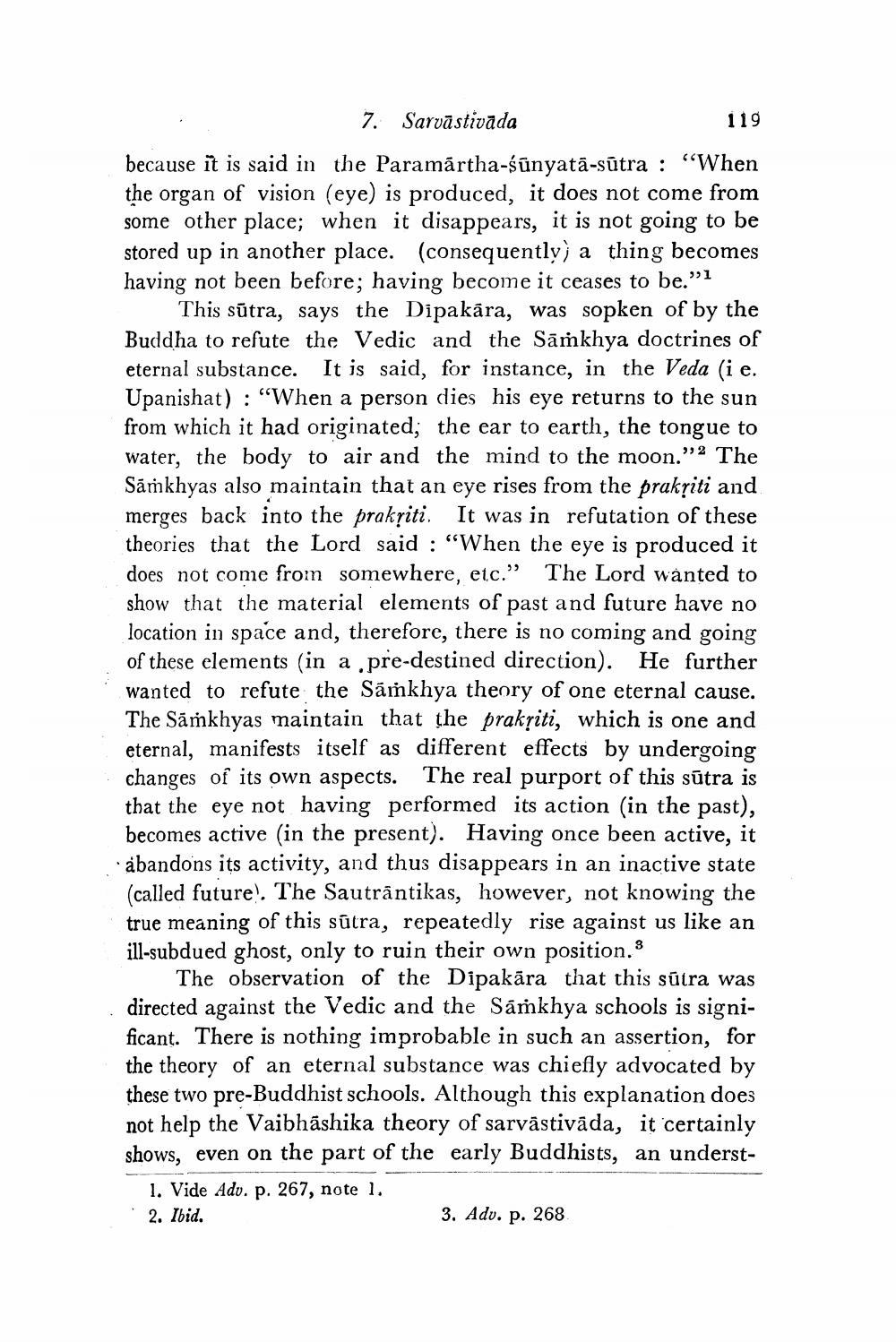________________ 7. Sarvastivada 119 because it is said in the Paramartha-sunyata-sutra : "When the organ of vision (eye) is produced, it does not come from some other place; when it disappears, it is not going to be stored up in another place. (consequently, a thing becomes having not been before; having become it ceases to be."1 This sutra, says the Dipakara, was sopken of by the Buddha to refute the Vedic and the Samkhya doctrines of eternal substance. It is said, for instance, in the Veda (i e. Upanishat) : "When a person dies his eye returns to the sun from which it had originated; the ear to earth, the tongue to water, the body to air and the mind to the moon."2 The Samkhyas also maintain that an eye rises from the prakriti and merges back into the praksiti. It was in refutation of these theories that the Lord said : "When the eye is produced it does not come from somewhere, etc." The Lord wanted to show that the material elements of past and future have no location in space and, therefore, there is no coming and going of these elements (in a .pre-destined direction). He further wanted to refute the Samkhya theory of one eternal cause. The Samkhyas maintain that the praksiti, which is one and eternal, manifests itself as different effects by undergoing changes of its own aspects. The real purport of this sutra is that the eye not having performed its action (in the past), becomes active (in the present). Having once been active, it abandons its activity, and thus disappears in an inactive state (called future. The Sautrantikas, however, not knowing the true meaning of this sutra, repeatedly rise against us like an ill-subdued ghost, only to ruin their own position. The observation of the Dipakara that this sutra was directed against the Vedic and the Samkhya schools is significant. There is nothing improbable in such an assertion, for the theory of an eternal substance was chiefly advocated by these two pre-Buddhist schools. Although this explanation does not help the Vaibhashika theory of sarvastivada, it certainly shows, even on the part of the early Buddhists, an underst 1. Vide Adv. p. 267, note 1. 2. Ibid. 3. Adv. p. 268




